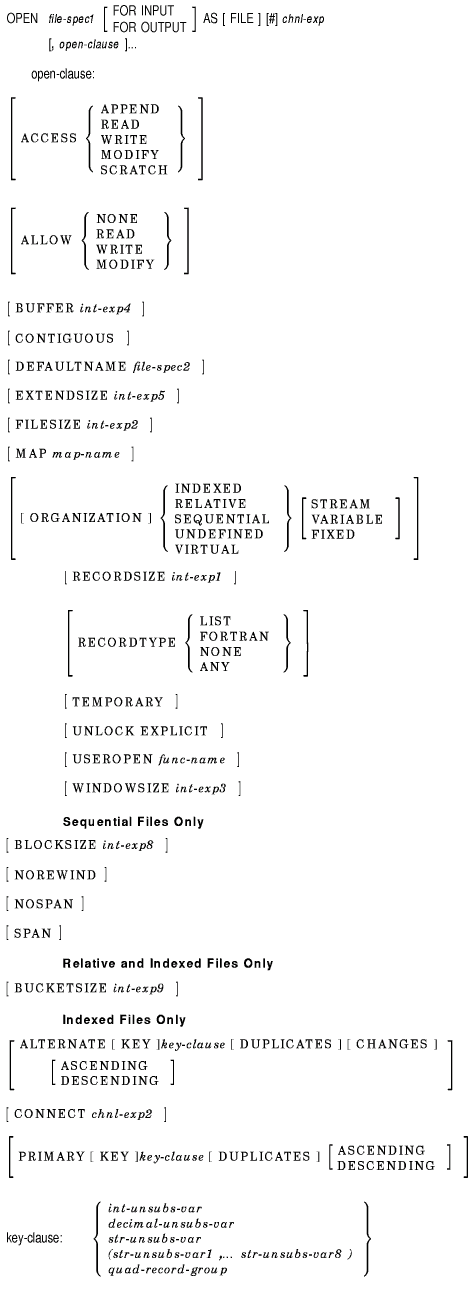| Previous | Contents | Index |
The ON...GOTO statement transfers program control to one of several lines or targets, depending on the value of a control expression.

ON INDEX% GOTO 700,800,900 OTHERWISE finish
.
.
.
finish:
END PROGRAM
|
The OPEN statement opens a file for processing. It transfers user-specified file characteristics to OpenVMS Record Management Services (RMS) and verifies the results.

10 INPUT 'FILE NAME';fnam$
20 OPEN fnam$ FOR INPUT AS FILE #1%, &
DEFAULTNAME "USER$$DISK:.DAT"
|
Future releases of the OpenVMS Run-Time Library may alter the use of some RMS fields. Therefore, you may have to alter your USEROPEN procedures accordingly. |
OPEN "FILE.DAT" AS FILE #4 |
OPEN "INPUT.DAT" FOR INPUT AS FILE #4, &
ORGANIZATION SEQUENTIAL FIXED, &
RECORDSIZE 200, &
MAP ABC, &
ALLOW MODIFY, ACCESS MODIFY
OPEN Newfile$ FOR OUTPUT AS FILE #3, &
INDEXED VARIABLE, &
MAP Emp_name, &
DEFAULTNAME "USER$$DISK:.DAT", &
PRIMARY KEY Last$ DUPLICATES, &
ALTERNATE KEY First$ CHANGES
MAP (SEGKEY) STRING last_name = 15, &
MI = 1, first_name = 15
OPEN "NAMES.IND" FOR OUTPUT AS FILE #1, &
ORGANIZATION INDEXED, &
PRIMARY KEY (last_name, first_name, MI), &
MAP SEGKEY
|
| Previous | Next | Contents | Index |